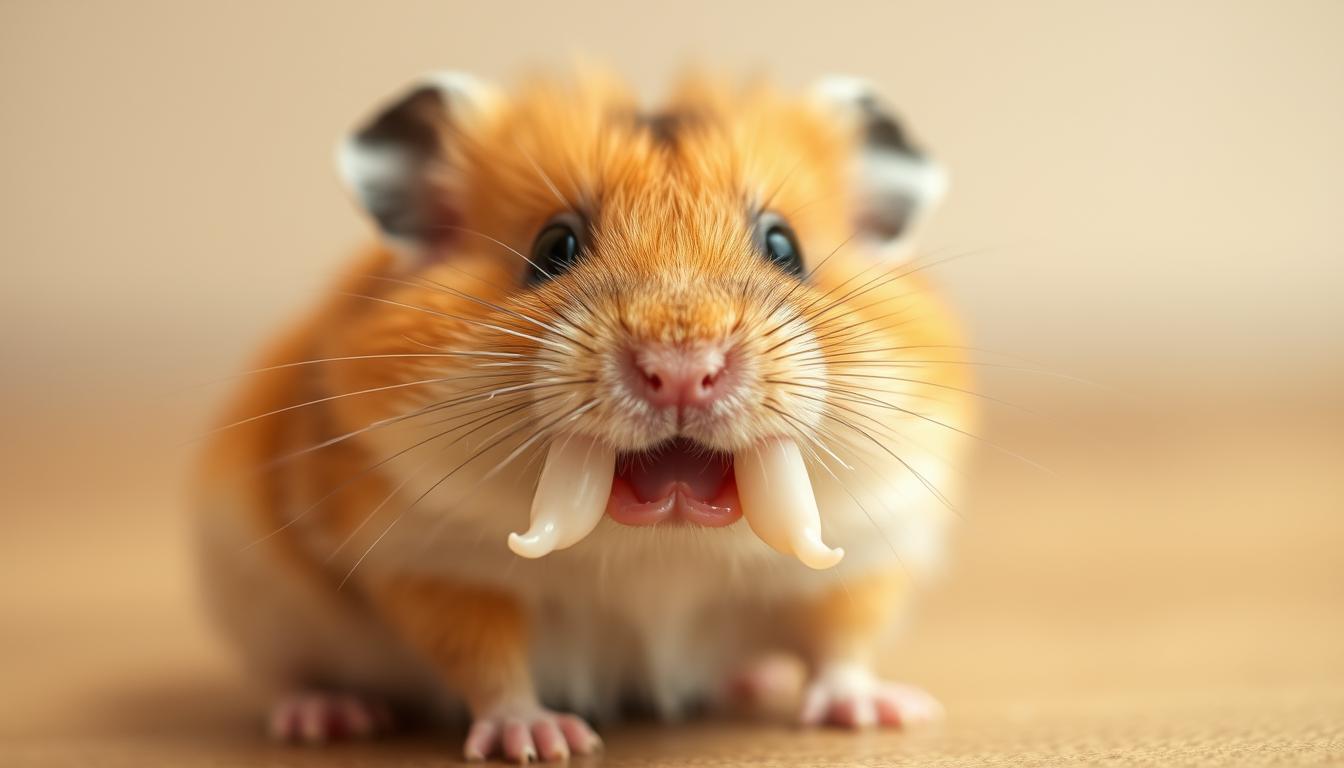Hamsters, those adorable little bundles of fur and energy, are known for their cheek pouches, their running wheels, and… their constantly growing teeth! Yes, you read that right. Just like rabbits and other rodents, a hamster’s teeth never stop growing. This might sound like a recipe for disaster, but with a little knowledge and effort, you can easily help your furry friend maintain a healthy and comfortable bite. This article will guide you through the ins and outs of hamster dental care, from understanding their unique teeth to preventing and managing overgrown chompers. So, grab a cup of tea (or a handful of sunflower seeds, if you’re a hamster!), and let’s dive in! We’ll explore everything from safe chew toys to dietary considerations, ensuring your hamster flashes a happy, healthy grin for years to come.
Understanding Hamster Teeth: Why They Never Stop Growing
Hamsters, like other rodents, possess a unique dental setup that requires special attention. Their incisors, the two prominent teeth in the front of both their upper and lower jaws, are "open-rooted," meaning they grow continuously throughout their lives. This constant growth is a necessary adaptation, as their teeth are naturally worn down by gnawing and chewing on tough materials in their natural environment.
Think of it like a pencil that’s constantly being sharpened. The chewing action acts as the sharpener, keeping the teeth at a manageable length. Without this constant wear, the teeth can quickly become overgrown, leading to a host of problems for your little companion.
The rate of growth can vary slightly between individual hamsters, but generally, their incisors can grow several millimeters each week. This rapid growth highlights the importance of providing them with ample opportunities to wear down their teeth naturally.
This continuous growth isn’t a design flaw; it’s a clever evolutionary adaptation. In the wild, hamsters forage for tough seeds, roots, and other fibrous materials that naturally wear down their teeth. Domestication, however, often deprives them of these natural chewing opportunities.
Therefore, as responsible hamster owners, we need to mimic these natural conditions by providing appropriate chew toys and a diet that promotes healthy dental wear. Understanding the reason behind the constant growth is the first step in ensuring your hamster’s dental health.
Ignoring this crucial aspect of hamster care can lead to serious health issues, impacting their ability to eat and ultimately affecting their overall well-being. So, let’s learn how to keep those pearly whites in tip-top shape!
The Importance of Keeping Your Hamster’s Teeth in Check
Overgrown teeth might seem like a minor issue, but for a hamster, it’s a serious problem that can significantly impact their quality of life. Imagine trying to eat with teeth that are constantly getting in the way – it’s not a pleasant thought, is it? Overgrown teeth can prevent your hamster from properly eating, leading to malnutrition and weight loss.
When a hamster’s teeth become too long, they can curve inwards, potentially piercing the roof of their mouth or tongue. This is incredibly painful and can lead to infections and abscesses. Imagine the discomfort and distress your little friend would experience!
Furthermore, overgrown teeth can affect their grooming habits. Hamsters are meticulous groomers, and they rely on their teeth to keep their fur clean and free of parasites. If their teeth are too long, they won’t be able to groom themselves effectively, leading to matting and potential skin problems.
Beyond physical discomfort, overgrown teeth can also cause behavioral changes. A hamster in pain might become lethargic, irritable, and less active. They might also lose interest in playing and interacting with you.
In severe cases, overgrown teeth can even lead to starvation and death. If a hamster is unable to eat due to the length of their teeth, they will eventually succumb to malnutrition. It’s a heartbreaking scenario that can be easily prevented with proper dental care.
Therefore, keeping your hamster’s teeth at a healthy length is not just about aesthetics; it’s about their overall health, well-being, and happiness. It’s a fundamental aspect of responsible hamster ownership that should never be overlooked.
Signs Your Hamster’s Teeth Are Getting Too Long, Uh Oh!
Recognizing the signs of overgrown teeth is crucial for early intervention and preventing serious complications. Knowing what to look for can make all the difference in your hamster’s health and comfort. So, let’s become dental detectives and learn the telltale signs!
One of the most obvious signs is difficulty eating. You might notice your hamster dropping food, struggling to chew, or only eating soft foods. They might also show a decreased appetite or refuse to eat altogether.
Another clear indicator is a change in the appearance of their teeth. If you can easily see their incisors extending far beyond their lips, they are likely too long. You might also notice that the teeth are misaligned or growing at an unusual angle.
Weight loss is another red flag. If your hamster is not eating properly due to overgrown teeth, they will inevitably lose weight. Monitor their weight regularly and consult a vet if you notice a significant drop.
Drooling or excessive salivation can also be a sign of dental problems. Overgrown teeth can irritate the mouth and cause increased saliva production. You might notice wet fur around their mouth and chin.
Behavioral changes can also indicate dental issues. A hamster in pain might become less active, more irritable, or reluctant to be handled. They might also groom themselves less frequently.
Finally, look for any signs of injury or infection in the mouth. This could include redness, swelling, bleeding, or the presence of abscesses. If you notice any of these symptoms, it’s essential to seek veterinary attention immediately.
Chew Toys: Your Hamster’s Best Friend for Dental Health
Chew toys are the cornerstone of hamster dental care. Providing your hamster with a variety of safe and appropriate chew toys is the most effective way to help them maintain a healthy tooth length. These toys encourage natural chewing behavior and help wear down their constantly growing incisors.
Think of chew toys as tiny, edible treadmills for their teeth! They provide a safe and engaging way for your hamster to exercise their jaw muscles and keep their teeth in check. A variety of textures and materials will keep your hamster interested and prevent them from becoming bored.
Wooden chew toys are a popular and readily available option. Look for untreated, kiln-dried wood specifically designed for small animals. Avoid wood that has been treated with chemicals or paints, as these can be toxic to hamsters.
Cardboard tubes and boxes can also provide hours of chewing fun. Just make sure they are free of staples, tape, and any other potentially harmful materials. You can even stuff the cardboard with hay or bedding to make it even more engaging.
Commercial chew toys made from compressed vegetable matter or other natural materials are also a good choice. These toys are often flavored to make them even more appealing to hamsters.
Rotate the chew toys regularly to keep your hamster interested and prevent them from becoming bored. Introduce new toys and remove old ones to maintain their enthusiasm for chewing.
Remember, chew toys are not just about dental health; they also provide mental stimulation and enrichment for your hamster. Chewing is a natural behavior that helps reduce stress and boredom, contributing to their overall well-being.
Safe Wood Choices: What’s Okay for Hamster Chewing?
When it comes to providing wooden chew toys for your hamster, safety is paramount. Not all wood is created equal, and some types can be harmful or even toxic to your furry friend. Knowing which woods are safe and which to avoid is crucial for protecting their health.
Safe wood choices include applewood, pear wood, hazelnut wood, and willow. These woods are generally considered non-toxic and are readily available in pet stores or online. Make sure the wood is untreated and free of any chemicals, paints, or varnishes.
Kiln-dried wood is also a good option, as the drying process helps to remove any potential toxins or pathogens. However, always ensure that the kiln-drying process did not involve any chemical treatments.
Avoid cedar and pine shavings for bedding, as the aromatic oils can be irritating to your hamster’s respiratory system. While small pieces of kiln-dried pine might be acceptable as chew toys in some opinions, it’s generally best to err on the side of caution and avoid them altogether.
Never give your hamster wood that has been treated with pesticides, herbicides, or any other chemicals. These chemicals can be extremely toxic and can cause serious health problems.
Avoid giving your hamster wood that you have found outdoors, as it may be contaminated with bacteria, fungi, or parasites. Always purchase wood from a reputable source that specializes in pet supplies.
If you are unsure whether a particular type of wood is safe for your hamster, it’s always best to err on the side of caution and avoid it. When in doubt, consult with your veterinarian or a knowledgeable pet store employee.
Cardboard Creations: Recycled Fun for Hamster Dental Care
Cardboard is a readily available and inexpensive material that can provide hours of chewing fun and dental care for your hamster. Recycling cardboard into chew toys is not only good for the environment but also great for your hamster’s teeth!
Empty toilet paper rolls and paper towel rolls are classic hamster toys. They are the perfect size for your hamster to crawl through and chew on. Just make sure to remove any glue or tape before giving them to your hamster.
Cardboard boxes can also be repurposed into chew toys. Cut holes in the box to create tunnels and hiding places, and let your hamster go to town chewing on the cardboard. You can even stuff the box with hay or bedding to make it even more engaging.
Avoid using cardboard that has been printed with colorful inks, as these inks may contain harmful chemicals. Opt for plain, brown cardboard

